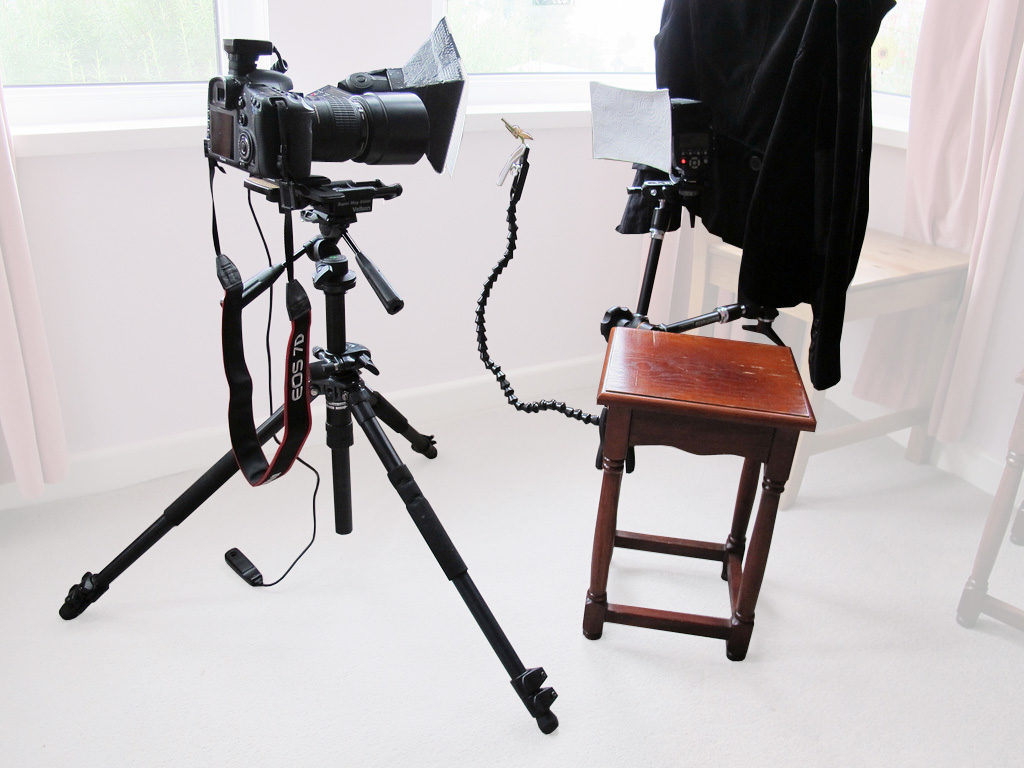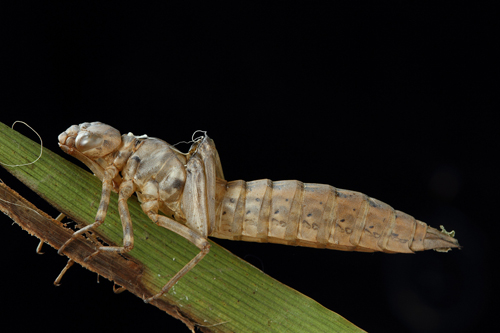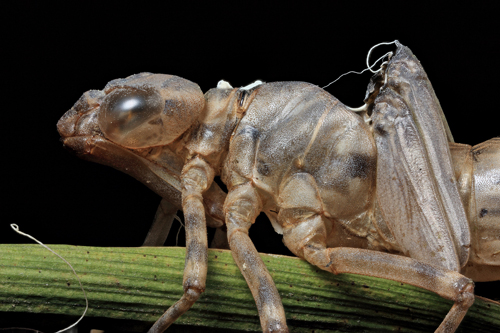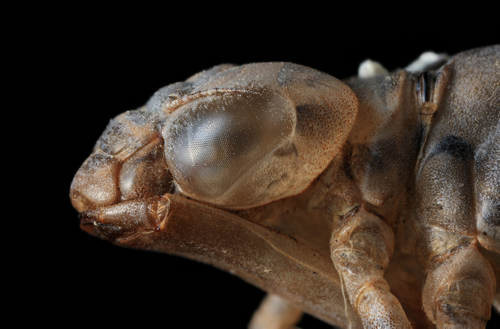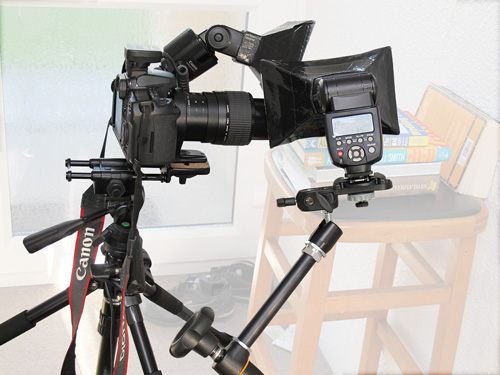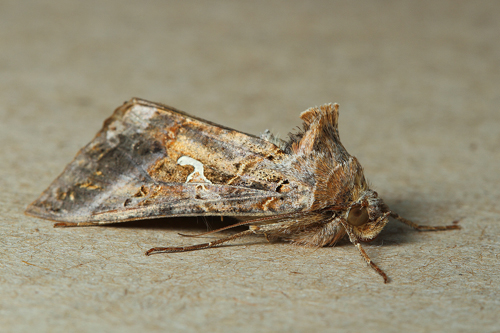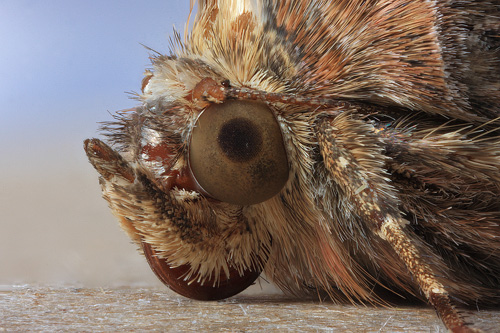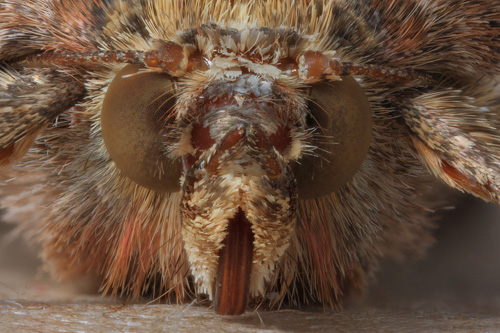While the majority of my captures are taken in the field there are times when I will take a specimen into the studio allowing me more control over the scene, being able to easily modify the lighting, background and move around the subject without anything getting in the way. Exuviae can easily be collected and make great subjects for the studio. One can also document the process of metamorphosis which in moths and ladybirds can take up-to two weeks and would not be practical or feasible outdoors.
There are ethical considerations to take into account because moving an insect from its environment can lesson its chances of survival. I therefore avoid taking insects from the field to the studio and will only choose specimens found in a dormant state in my garden, shed or home. I also avoid freezing insects even knowing that some photographers have done it successfully without harming them. Personally, I feel uneasy about this and would rather not take the risk. The well being of the subject must always come first with photographic considerations second.
Once I have completed the studio session I will always make sure that I place the insect back, exactly where I found it. As an amature photographer, when I say ‘studio’, I am not talking about a full blown photography studio, I just mean indoors, in a controlled environment. In most instances the top of a small table is used as my studio! This makes setting up a macro photography studio inexpensive and easy to pack away when not needed.

